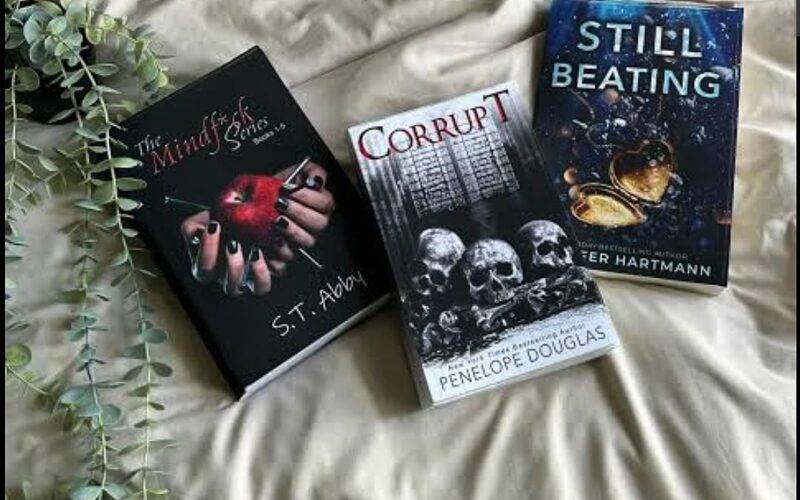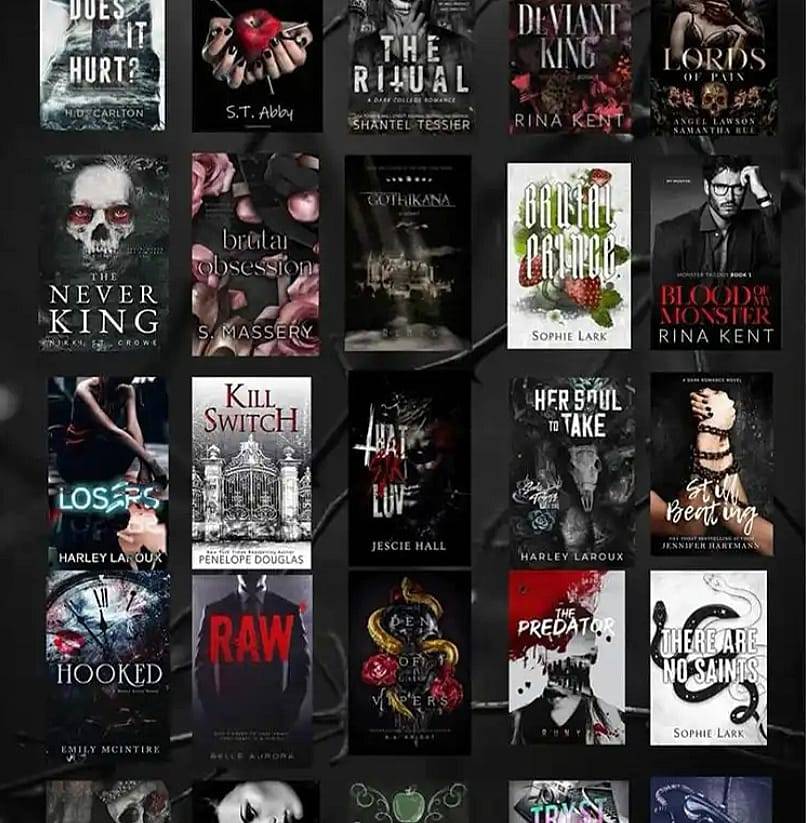Tropes in literature serve as plot patterns or protocols that help shape and define storytelling across genres. From the age-old story of the hero’s journey to the forbidden love affair, tropes provide a structure for writers to make appealing narratives and for readers to get used to familiar themes. Some tropes may feel clichéd or overused,but some others serve as timeless plots that resonate with audiences across generations of reading. Whether or not embraced wholeheartedly, tropes do play a very important role in the art of storytelling, serving as cement blocks upon which writers and authors construct their unique worlds and characters. In true spirit, tropes perform a language of storytelling, offering a common vocab through which writers and readers can participate in writing and reading respectively.
In the vast field of literature, there exist hidden gems waiting to be discovered. While certain tropes and subgenres rule the literary scene, there are many others that remain in the shadows, just a little overlooked and underappreciated
In this article, we embark on a journey to uncover these lesser-known aspects of storytelling, shedding light on their unique characteristics.
While the romance genre is often associated with classic tropes like when opposites attract and happily-ever-afters, there exists a plethora of lesser-known tropes.
-
Second Chance at Love:
While second-chance romances are a popular trope, exploring unfamiliar reasons for the initial breakup can add depth to the story. Perhaps the protagonists were torn apart by circumstances beyond their control, or they made a difficult choice that led to their separation or one of them actually did something so wrong that tainted their relationship. By analyzing the complexities of forgiveness and redemption, this trope offers a compelling canvas to build up a plot that shows love’s resilience in the face of adversity.
The Divorce by Nicole Strycharz is a book just for this
-
MMF Dynamics:
MMF (male-male-female) relationships offer a different exploration of love and intimacy, challenging traditional notions of romance and partnership. In these narratives, the focus is not solely on the romantic connection between the central couple of two but also on the dynamic and balance of desire between all three characters. MMF relationships celebrate diversity and inclusivity loudly, inviting readers to explore the complexities of love in all its forms.
Give me more by Sara Cate is perfect for someone starting with the trope.
-
The “Why Choose” Trope:
The “Why Choose” trope presents the lead with multiple romantic options, pushing them to control the complications of their feelings and desires. Unlike traditional love triangles where one option is ultimately chosen, the “Why Choose” trope embraces the possibility of polyamory or open relationships, clinging to the idea that love knows no bounds. This trope offers a new and a different exploration of autonomy in matters of the heart, challenging characters to follow their own path to fulfillment and satisfaction.
Lilac by B.B. Ried is a great example for someone wanting to read something of this taste.
-
Embracing Antichrist Characters:
In a departure from the traditional romance core, Antichrist characters offer a very appealing study of redemption, temptation, and forbidden love. These leads often grapple with their darker nature, torn between their inherent darkness and their capacity for love and redemption by getting on their knees in front of their desire. By searching into the complexities of morality and free will, stories featuring Antichrist characters offer a blend of romance and supernatural intrigue, challenging readers to confront the depths of human nature.
The Coven by Harper L. Woods should be your next read to satiate your taste if this intrigues you.
-
Gothic Atmosphere and Horror:
Gothic romance draws readers into a world buried in mystery and suspense, where crumbling mansions, haunted landscapes, and brooding leads set the stage for forbidden passions and sinister dark secrets. In these narratives, the atmosphere is as important as the characters themselves, evoking a sense of unease and anticipation that keeps readers on the edge of their seats.
Gothikana by Runyx is a great example of gothic horror because of the spooky atmosphere and the creepy setting.
-
Enemies-to-Lovers with a Twist:
While the enemies-to-lovers trope is a staple of romance literature, adding a twist can breathe new life into this familiar narrative. Instead of traditional rivals, protagonists could be adversaries with a shared goal or a common enemy, forced to work together despite their initial animosity. This dynamic creates tension and complexity, leading to unexpected alliances and heartfelt revelations.
The Hating Game by Sally Thorne is a perfect book if you feel like this is a trope for you
-
The Devil Incarnate:
A main character who is revealed to be the devil or has evil intentions adds a chilling dimension to romance narratives. Whether posed as a charming suitor or lurking in the shadows, these characters personify the dark side of human nature, tempting readers with promises of power and pleasure. As the true nature of these characters is unveiled, protagonists must confront their own desires and the consequences of their choices.
Coven of Bones by Harper L. Woods again comes in as a perfect fit for this.
-
Betrayal and Cheating:
While romance often celebrates love and fidelity, narratives that explore themes of betrayal and cheating offer a more subtle portrayal of relationships. Whether driven by desire, revenge, or desperation, acts of infidelity challenge characters to confront their own weaknesses and the fragility of trust. These narratives delve into the intricacies of human relationships, exploring the consequences of betrayal or the possibility of redemption.
Swelter by Nina Jones is a tale where the heroine cheating on her husband pushed her to the real love of her life
-
Secret Identities and Deception:
Characters with secret identities add an element of intrigue and suspense to romance narratives, keeping readers guessing until the truth is revealed. Whether posing as someone else to escape their past or to pursue a hidden agenda, these characters navigate a scandalous balance between truth and deception. As their secrets unravel, protagonists must confront the lies that have shaped their relationships and their own identities.
The Mindf*ck Series by S.T Abby is one of the best books out there for this.
-
Romantic Suspense:
Combining the thrills of suspense with the passion of romance, romantic suspense offers readers a high-stakes blend of danger, curiosity, and romance. From crime-solving duos to undercover agents and reluctant allies, romantic suspense features leads who must navigate risky situations while clashing with their growing attraction to each other. With its blend of heart-pounding action, sizzling chemistry, and pulse-pounding suspense, romantic suspense keeps readers on the edge of their hearts until the very end.
Be Still My Heart by Emily McIntire and Sav R. Miller is just the book for you if you want to dip your toes in some suspense.
-
CNC Romance
CNC romance, also known as dubcon (dubious consent) or consensual non-con romance, explores intimate relationships where one character consents to activities that may appear non-consensual on the surface.In CNC romance, leads navigate relationships where power imbalances play a central role, leading to scenarios where one character may push the boundaries of consent while the other willingly submits to their desires. These narratives often surrender into themes of dominance and submission, control, and the blurred lines between pleasure and pain. With its pressure on communication, trust, and negotiation, CNC romance offers readers a different portrayal of complex and consensual power dynamics within intimate relationships.
While CNC romance may challenge traditional notions of consent, it is important to note that these narratives greatly prioritize the safety and well-being of all characters involved. Consent is a central theme throughout CNC romance, with leads engaging in open and honest communication about their desires, boundaries, and limits. While some may find the themes of CNC romance provocative or controversial, others appreciate the subgenre’s exploration of taboo topics as a celebration of consensual power exchange.
The Hate Vow by C Hallman fits perfectly in the group.
-
Bully romances and non-consensual (non-con)
Bullying and non-consensual themes involve sensitive and potentially controversial subject matter. These themes can be triggering for some readers and may raise ethical concerns about the portrayal of unhealthy relationships or harmful behavior. Many readers prefer romance stories that focus on healthy, consensual relationships and shy away from narratives that portray abusive or non-consensual dynamics. As a result, bully romances and non-con themes may have a smaller audience compared to more traditional romance subgenres. Mainstream publishing trends often prioritize stories that align with societal norms and values, including the promotion of healthy and respectful relationships. Bully romances and non-con themes may be perceived as less marketable or commercially viable due to their potentially controversial nature.
These themes may not fit neatly into traditional romance subgenres, making it challenging for these books to find a place within mainstream publishing categories. As a result, they may be overlooked by publishers and readers alike.
There are ethical considerations involved in portraying abusive or non-consensual relationships in literature. Authors and publishers must navigate these sensitivities carefully to avoid glamorizing or romanticizing harmful behavior as bullying and non-consensual experiences are unfortunately prevalent in real life, and literature has the power to reflect these experiences authentically. By addressing these themes in fiction, authors can raise awareness, encourage empathy, and give validation for readers who have experienced similar situations.
These themes offer an opportunity to explore complex and nuanced relationships that exist outside the boundaries of traditional romance narratives. These stories delve into power dynamics, trauma, and emotional growth, providing readers with a deeper understanding of human behavior and relationships.
For survivors of bullying, abuse, or non-consensual experiences, seeing their stories represented in romance can be validating and empowering. It can cater to them by making them feel less alone and provide a sense of validation for their experiences. Fictional narratives that depict characters overcoming adversity and reclaiming their agency can serve as sources of inspiration and hope.
All themes challenge stereotypes and assumptions about romantic relationships and consent. They highlight the complications of human behavior and the ways in which power dynamics can influence personal dynamics. By engaging with these themes, readers are encouraged to really examine societal norms and expectations surrounding relationships.
Indulging in themes like these in literature contributes to the diversification of literary representation. It allows for the exploration of experiences and perspectives that are often diminished or overlooked in mainstream narratives. By amplifying diverse voices and stories, literature becomes more inclusive and reflective of the full spectrum of human experiences.
While mainstream readers often gravitate towards familiar tropes and genres, there exists a rich mosaic of lesser-known themes and subgenres waiting to be explored. From the darker realms of bully romances and non-consensual themes to the enchanting landscapes of gothic romance and romance with a twist, these hidden themes offer readers a diverse range of plot experiences. By embracing these unconventional themes and subgenres, literature becomes more inclusive, reflective, and transformative, inviting readers on a journey of discovery and exploration through the uncharted unexplored territories of the literary world. As readers progress beyond the confines of mainstream literature, they uncover new depths of emotion, imagination, and insight, enriching their literary experiences and broadening their understanding of the human condition. Celebrating the diversity of lesser-known tropes and genres contributes to the spirit and vibrancy of literature as a whole, ensuring that every reader can find their own unique literary journey in the middle of the vast and varied landscape of narration.



I think in this generation we hardly want to see old typical happy ending lovestories where a hero meets his heroine and then they both fight for their love with their families it’s kind of boring to see ,because in this generation lovestories suffer different complications well am a big fan of love stories which serves enemies to lovers kind of stuff.